Customer Service Knowledge Base: The Definition and Lifehacks for Building One
A customer service knowledge base gives an easy win to a business. This is how to build it.
Written by Olesia Melnichenko

The life of a customer service representative isn’t always cakes and ale. Here you are, sitting at your desk, catching every client’s issue, and telling them how to proceed with the product. In fact, this is a big deal for both a small-sized and fast-paced company. Imagine those customers that are scattered all over the globe…
Before this scenario becomes more vivid in your mind and hits you like a ton of bricks, think of how you, as a customer service rep or a business owner, could revolutionize the whole approach.
What could help your clients search for answers faster and find them in the nick of time? A customer service knowledge base – it has already given a leg up to hundreds of businesses. Are you ready to experience the same? Then keep both of your eyes peeled! 👀
What is a customer service knowledge base?
A customer service knowledge base represents a helpful information repository with a strict hierarchy and comprises everything from the company’s FAQs, how-tos, explanatory guides, visual materials, and whatnot. In other quarters, service-related questions and queries that customers usually ask a team.
For instance, the content to include in such a resource center could be:
- How to get started with your product;
- How to add billing details to an account;
- Basic guidelines on security and safety while using the account;
- Company mission statement;
- Troubleshooting instructions.
It doesn’t mean, though, that you have to jot down a wall of text in your resource hub. Everything rides on your business’s bottom line, how it operates, who the audience is, and what they usually ask for. That is why even a humble list of frequently asked questions or truncated explanations might do.
Quick tip❗️Go easy on information reduction and do this only if the context allows. For instance, make instructions on how to add a credit card to an account rather brief, while elaborating on the product kick-off.
How can a customer service knowledge base work for your business best?
Alright, we’ve gone past what a service knowledge base is. But we hear you say “It sounds overwhelming. Should I really get entangled in it?”.
Of course, you should.
Let me provide some numbers. According to a report, 92% of consumers say they would use a knowledge base before contacting a human contact representative, while 83% claim they would leverage a community forum if available (more on that later).
As you can guess, there are only bright sides to building a resource library for your customers. Are you still on the fence? Well, here are the key pro points that could tip the scale for you:
- Reduced resources and costs: since your clients will search for answers by themselves, you can spend less on new hires and teaching them along the way.
- Better content quality: if you have one unified pool of information, it is easier to fill it in, update it, and sustain a decent knowledge level across all the channels.
- Increased team productivity: your crew won’t spend much time handling every little customer request. They could count on a chatbot for knowledge base with contextual assistance. This cuts down the risks of burnout and fatigue.
- Enhanced customer service over time: because your team will have more resources on hand, they will be in a better position to improve professionally. It will lead to improving knowledge base content on a regular basis, allocating assets smartly, and investing in technology to improve customer experience.
9 lifehacks for preparing a customer service knowledge base
1. Hand-pick the topics to include
Your first trial starts here (and, well, the toughest one). First, decide what topics to cover in a help center. Of course, this can be a random set. However, you will get a much greater return if the topics will revolve around troubleshooting the customer problems with your product.
How to gather them? Speak to your customer support team, find out what pain points your audience usually has while using the product, what solutions they offer themselves, and how long it takes to tackle those problems.
Next, prioritize. A knowledge base for customer support should have a logical sequence. For instance, the issues repeated multiple times are the ones that bother customers the most, and that is why they should appear first. Then, choose the ones that had the least impact on the audience and so on. Over the course of time, you will update your knowledge base, creating a helpful pool of information.
See how we arrange the topics in the HelpCrunch customer service knowledge base. We add articles on the installation process and set-up, as well as our hallmark features so that they are the first to be shown on the page (and, of course, the same goes for the chat widget):

2. Set the structure
Knowledge is about putting things in order and organizing every bit of info. That is why making a so-called outline for your help center will only work in your favor.
But it doesn’t really mean that you have to jump off the deep end: think of the key structure elements your customer support knowledge base should involve:
- Categories
- Subcategories
- Sections
- Subsections
- Articles
How many sections per category should your help center comprise? What are they? And how many articles will you write? This should be nuanced from the get-go. For example, look at a mockup structure of a customer service SaaS knowledge base (you can also use color coding like I did):
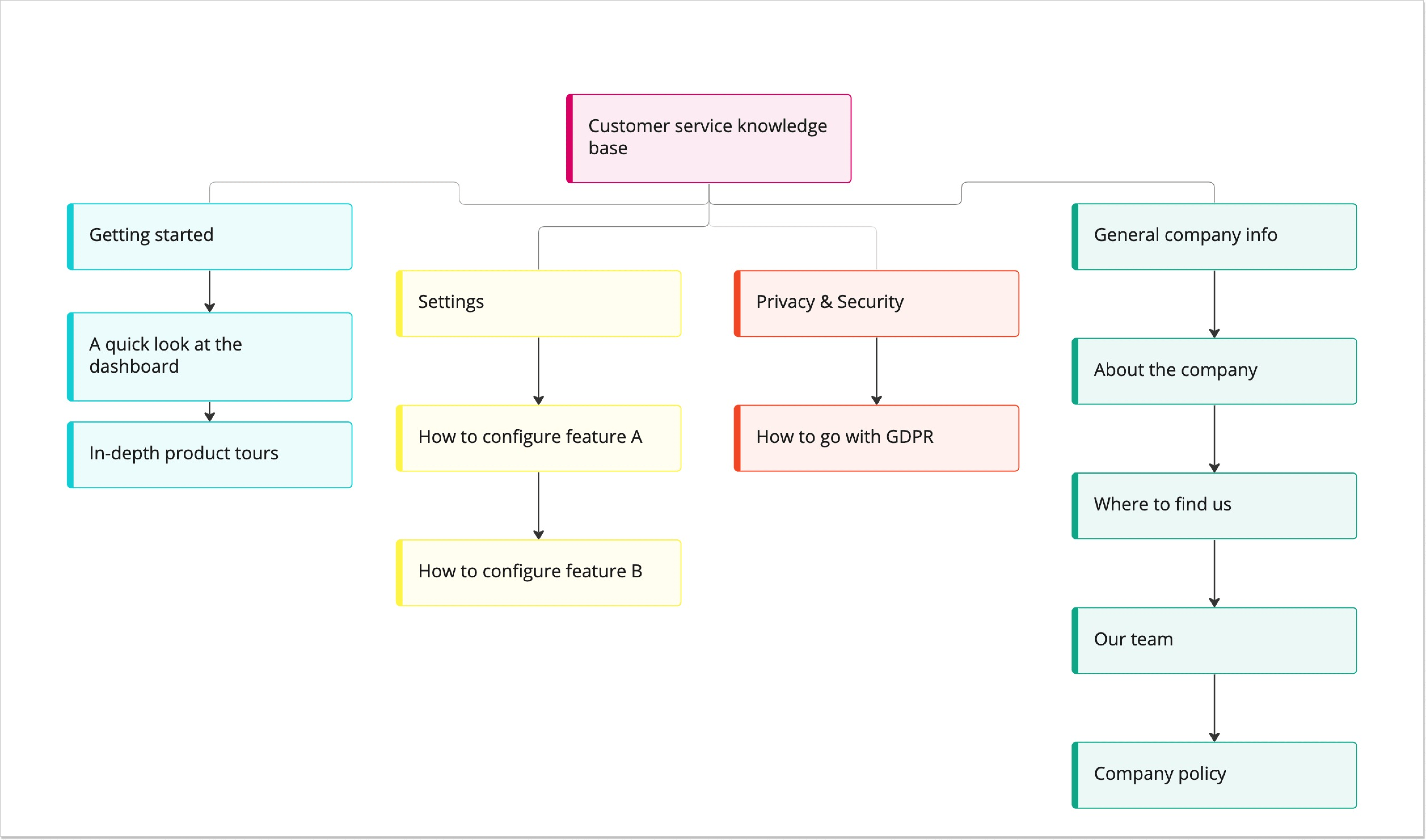
Your next stop should be finalizing the overall architecture for articles. Here everything boils down to a basic rule: start with an introduction, proceed with the main body, and conclude with final thoughts and, probably, additional recommendations. Besides, make sure you use bulleted lists for a better visual appeal. After you do these steps, you’ll see how easy this is to maintain and boost your knowledge base effectiveness.
3. Go international
Communication is the bread and butter of customer service, no matter how you slice it. But what if you don’t speak the same language as your audience? That’s where a multilingual customer support knowledge base software enters the play.
Without a common language, people can’t communicate effectively, and everything falls apart. By providing support in multiple languages, you can break down linguistic barriers and ensure that all of your clients can get the help they require, no matter where they are in the world.
Think of the ground-breaking upsides of the matter:
- Customers feel heard and understood;
- Your customer service teams can focus on more than just Google translating each request;
- New markets are opened and opportunities for growth are around the corner;
- Customer satisfaction soars.
The excellent news is that a go-to example is around us. We at HelpCrunch provide a multilingual customer service knowledge base that you can set up in a few clicks (see how by following the link!). Just add translations for your articles – the chat widget will already be equipped with the same set of translations as the main help center:
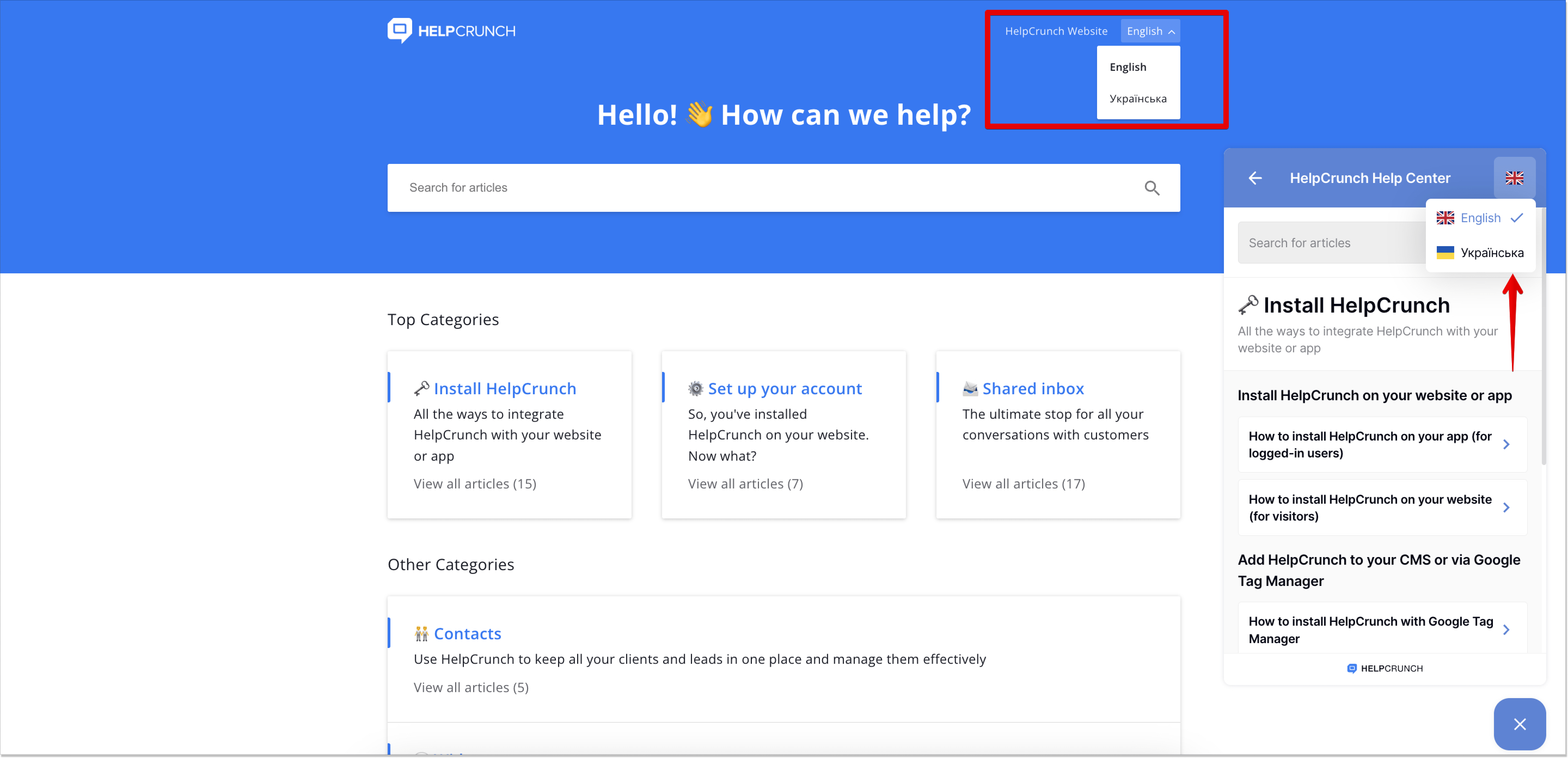
4. Keep SEO optimization in mind
No matter how much energy you put into the structure of your knowledge base for customer service but if the clientele struggles to find it in SERP, it’s a wasted effort. So make sure that your content is easy to discover and accessible to customers. That’s where search engine optimization (SEO) comes in.
SEO involves optimizing your website or content to rank higher in search engine results, making it more likely that customers will locate and use your help hub. Without it, the knowledge base may be buried on page 15 in SERP which is an arduous task for people to get the information they look for.
On top of it, the chances are you will attract the right audience. By optimizing your content for specific keywords and phrases, you can attract customers who are actively searching for the products or services you offer. This can help you build a more engaged customer base and increase the likelihood of repeat business.
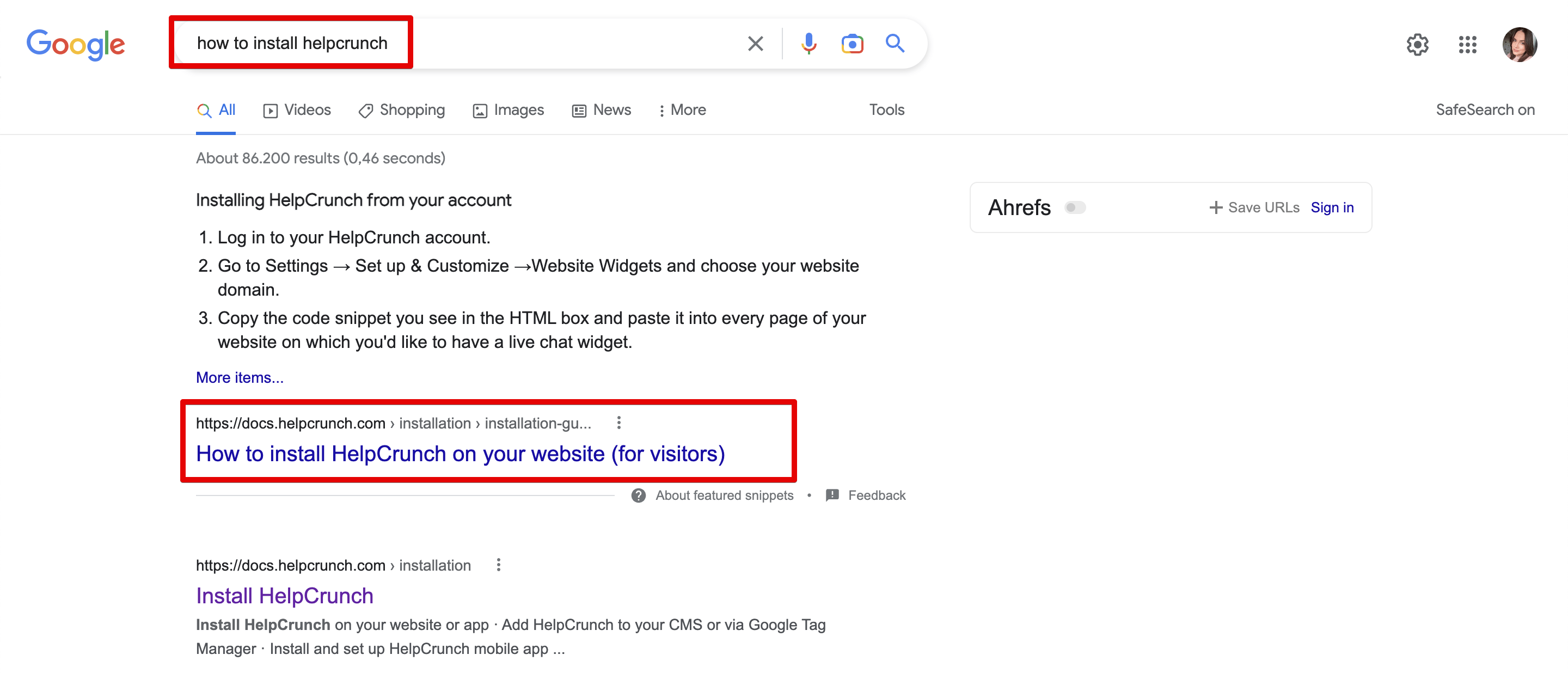
5. Make your resource center available 24/7/365
Customer service is usually associated with speed, stability, and quality. And so is a help center.
Broadly speaking, a knowledge base for customers that’s within arm’s reach 24/7 is like a reliable friend – always ready to help you out, no matter what time of day or night it is. It’s a comforting feeling to know that you can access the information you need whenever you need it, without having to wait for business hours or jump through hoops to resolve your issue.
By providing a 24/7 resource center, you’re meeting your customers’ expectations and giving them the kind of service they deserve. It’s like being a superhero, always ready to swoop in and save the day – except in this case, you’re providing consistent information instead of fighting crime 🦸♀️
So don’t leave your clients hanging – give them the support they require and they’ll be sure to come back for more.
6. Don’t keep it under wraps
Stats claim that if the information about your products is thin on the ground, 28% of consumers think that it’s a frustrating thing. Sure, all people are different but there is always one that will abandon a brand and switch to another one if the obstacles come their way.
That’s why finding customer service knowledge bases should be like playing hide-and-seek: just talk big about it so the audience DOES notice it.
The world-known ecommerce platform AliExpress is guided by the following principle: they added the link to their help center at the top section of the main home page. This location is intuitive, used by many other businesses for years, and makes it impossible to miss. This is what their customer service library looks like:
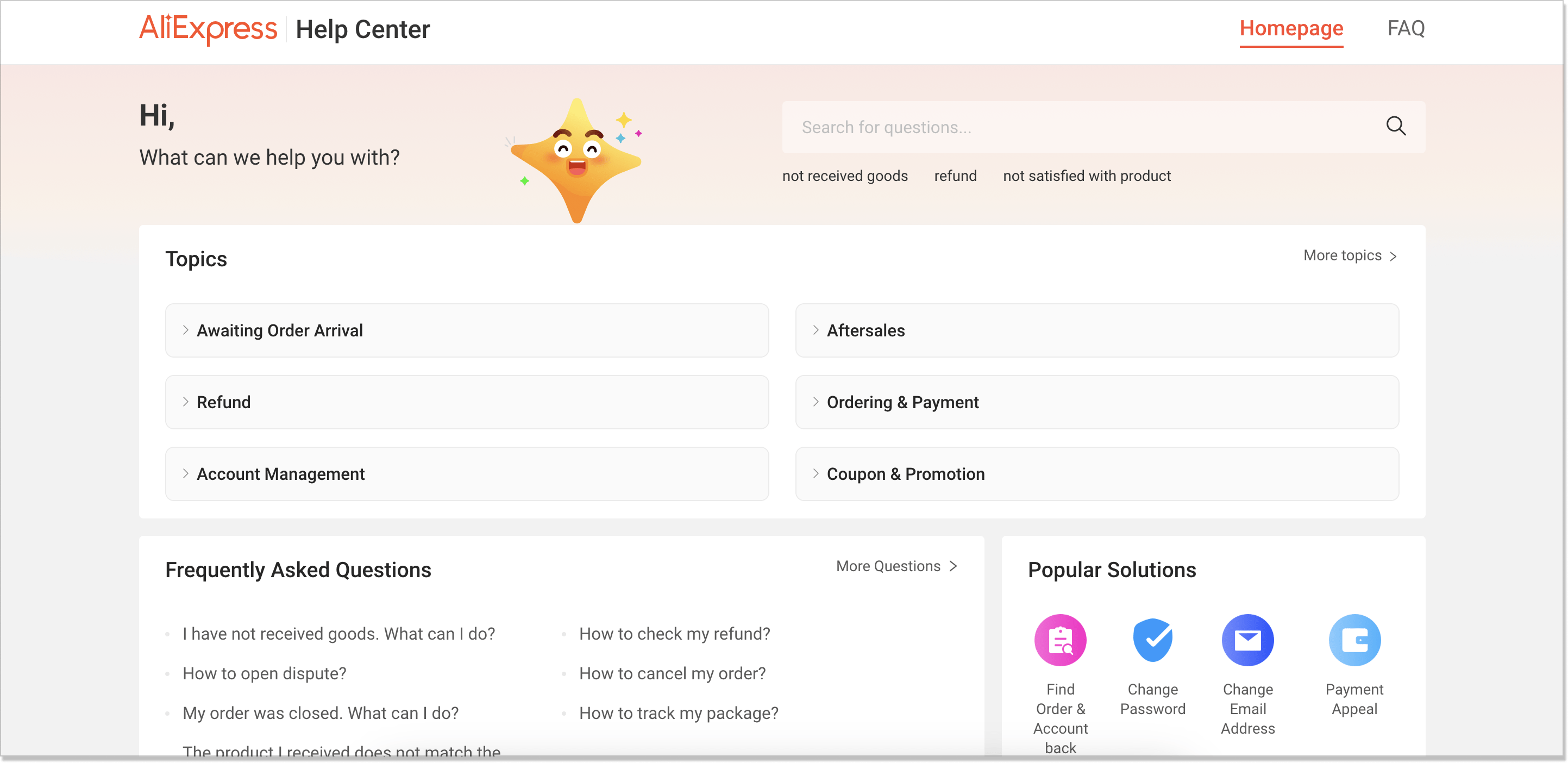
7. Enliven the knowledge base content with visuals
When it comes to customer service, words can only go so far. It’s always a wise choice to show stuff and make sure your help hub is engaging and easy to use. One way to do this is by incorporating visuals and interactivity. Adding images and interactive elements like quizzes or decision trees can help break up long blocks of text and make the information more memorable.
Visuals can also help to clarify complex concepts or procedures. For instance, a detailed guide to setting up a new product could be made much easier to follow by including annotated screenshots or video tutorials. This can reduce frustration and confusion for customers, and ultimately lead to a more positive experience with your company.
Here’s an example provided by Dropbox. The article explains how to upload and download files in Dropbox and includes clips for each paragraph. Such an approach eases the user’s perception and takes all the guesswork out while searching for answers:
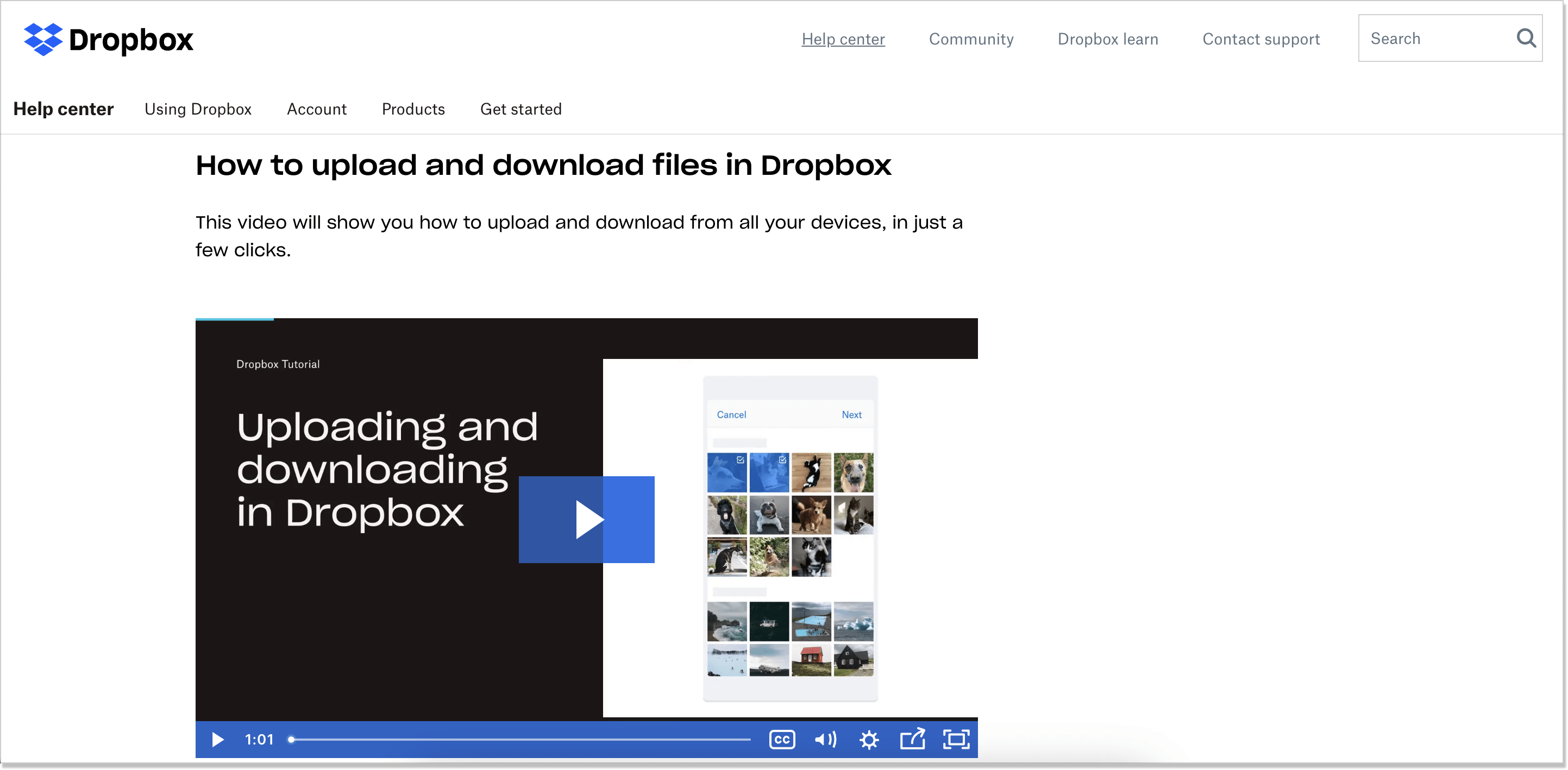
Interactive elements can also be a valuable tool for customer engagement. By allowing customers to interact with the knowledge base in a more hands-on way, you can help them to feel more invested in the process of finding a solution. This can increase their confidence in your company’s products or services, and lead to a greater sense of satisfaction overall.
To recap, don’t be afraid to get fancy with your customer service knowledge base – by adding visuals and interactivity, you can assemble a truly engaging and effective resource for your customers.
8. Arrange a community around your knowledge base
Communities are like the cool kids’ band in high school – everyone wants to be a part of it sooner or later (I did!). So when it comes to customer service knowledge base software, communities are pivotal for creating a sense of belonging and collaboration among clients.
By allowing customers to ask and answer each other’s questions, share tips and tricks, and provide feedback, you’re creating a community of users who are invested in your product and want to help each other succeed.
Think of it as a potluck – everyone brings something different to the table, but together, you have a delicious and satisfying meal. Similarly, a customer service knowledge base community allows users to share their unique perspectives and experiences, and learn from each other in a way that’s more engaging and interactive than just reading a document.
Plus, when customers feel like they’re part of a community, they’re more likely to stick around and become loyal customers. Let me introduce an example of such a community. 1Password is a password manager that developed a really sprouting space for its clientele.
It can be accessed either from their main knowledge base – the Still have a question? field at the bottom of the page – or from the Forum section in the footer of the website’s home page. This community is all about being closer to people: you can see teal faces, discuss whatever it is about 1Password’s products, and share your concerns about them.
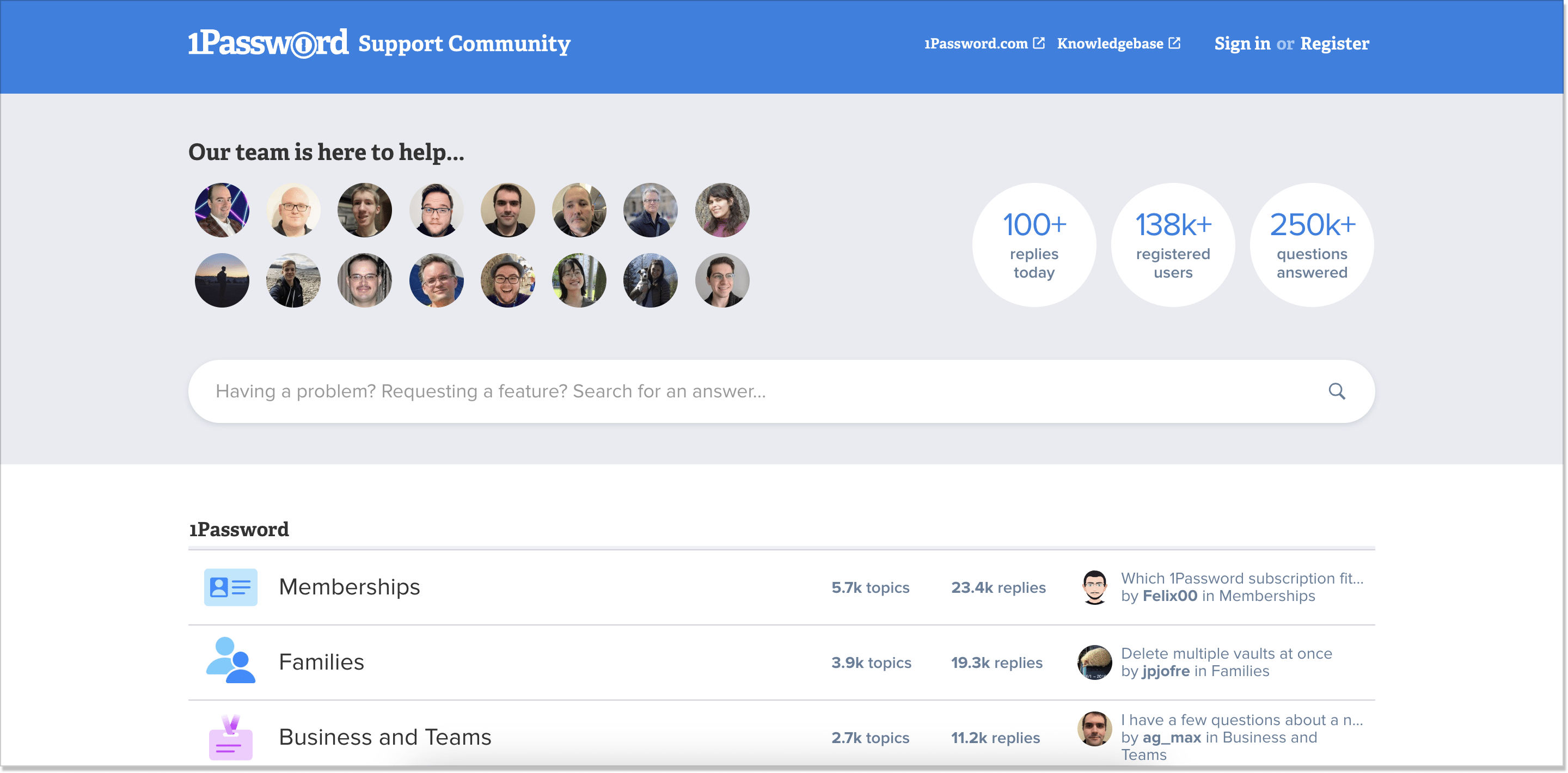
9. Update the content at times
Have you ever searched for a solution to a problem on a company’s website, only to stumble onto outdated or irrelevant information in their customer service knowledge base? It’s frustrating and time-consuming, and it can leave a bad taste in your mouth. That’s why it’s critical for brands to regularly update their knowledge base with current and accurate information.
For starters, keeping your knowledge base up to date shows that you care about your customers’ experiences. By providing them with accurate and relevant information, you’re making it easier for them to solve their problems and get the help they crave for. This can lead to increased customer satisfaction and loyalty, as well as fewer support requests from frustrated customers.
Off the top of my head, the immaculate example here would be the one from Apple. Their help center contains the Manuals section.
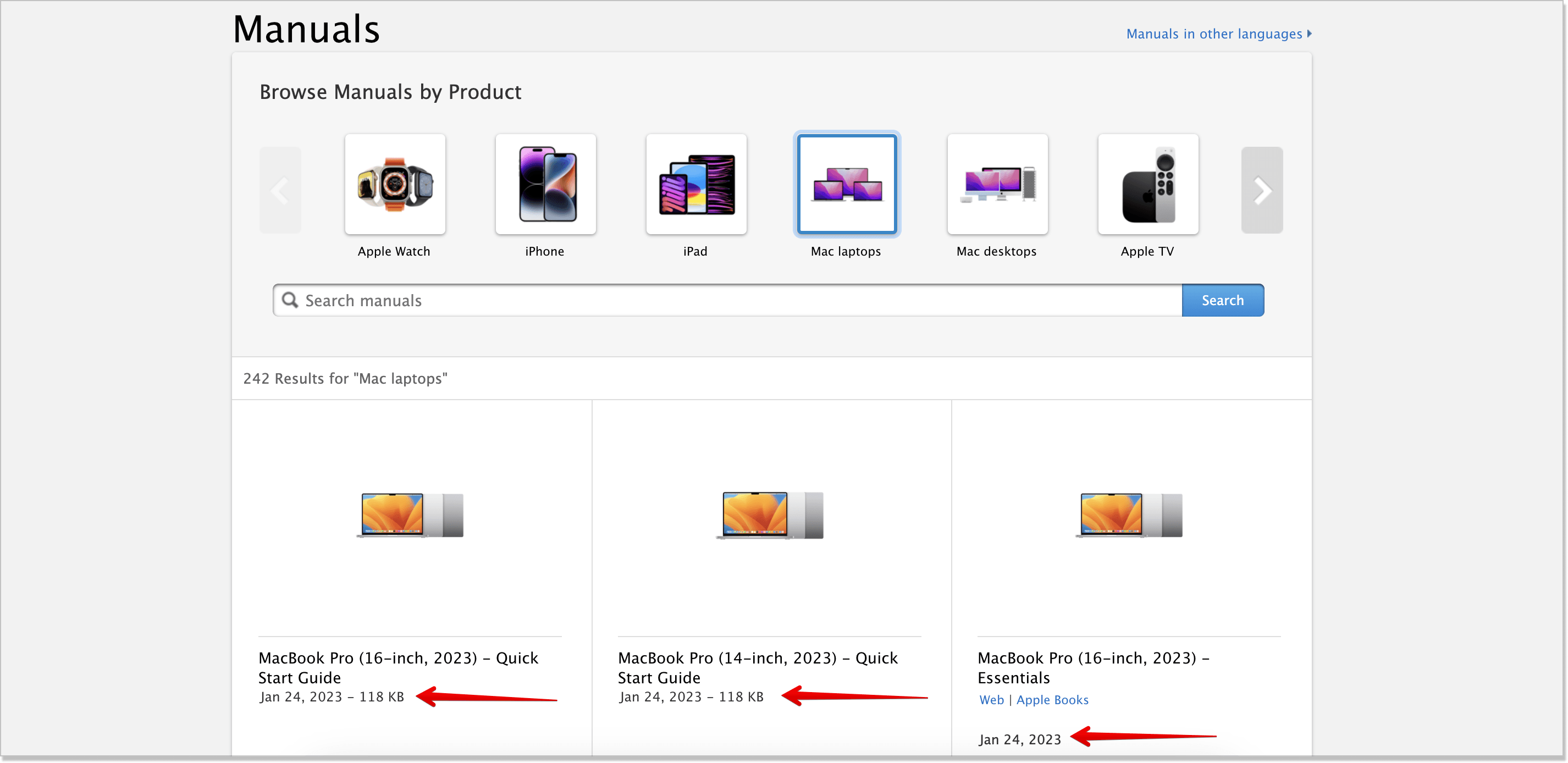
Secondly, updating your knowledge base can help your team work more efficiently. When your team has access to the most up-to-date information, they can provide faster and more accurate support to customers. This can save time and resources for both your team and your customers, and it can help you maintain a positive reputation as a responsive and helpful company.
In conclusion, updating your customer service knowledge base is a small but important part of providing excellent customer service. By doing so, you’re showing your customers that you value their time and their needs, and you’re helping your team work more effectively. Take the time to review and update your knowledge base regularly – your customers (and your team) will thank you for it!
The final push
It’s hard to overstate the importance of customer service, as it’s your most valuable asset, a way to stand out in today’s competitive market. And, a knowledge base for customer support can become a strong tool in your team’s arsenal. But if you don’t have stable software for nailing it, the whole endeavor might go down the plughole.
So, the main aspects to look at while choosing the “steady technical ground”: 1) the ability to create consistent content, 2) design it the way you like it, and 3) the opportunity to reduce employee burnout and elevate customer self-service. I am sure, the best solution for you is not a hundred miles away 😉






